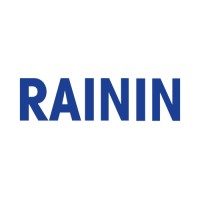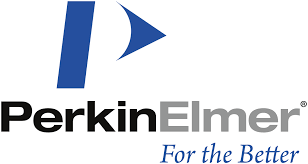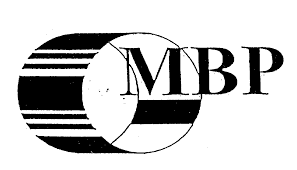Danaher Corporation: A Global Life Sciences and Diagnostics Innovator
Danaher Corporation stands as one of the world’s leading innovators in life sciences and diagnostics, with a remarkable journey of transformation and growth since its inception. With projected 2024 revenue of $24 billion and nearly 63,000 associates across 60+ countries, Danaher has established itself as the second-largest scientific instruments and medical devices company in the United States. The company’s continuous improvement philosophy, strategic acquisitions, and focus on innovation have created a powerful business model that consistently delivers value to customers, shareholders, and society.
Company History and Evolution
Founded in 1984 by brothers Steven M. Rales and Mitchell P. Rales, Danaher began as a small industrial company with a vision to create a business dedicated to continuous improvement and customer satisfaction. The company achieved Fortune 500 status within just two years of its founding, demonstrating remarkable growth from the outset.
Danaher’s evolution has been characterized by strategic transformation and adaptability. The company initiated its journey with a focus on manufacturing and industrial tools, acquiring 12 companies within its first two years of operation. In 1988, Danaher developed what would become its cornerstone for success – the Danaher Business System (DBS), an operational philosophy that drives efficiency and growth across all its operations.
The company’s strategic pivot toward healthcare began in 2004 with the acquisition of Radiometer, its first diagnostics business. This move into healthcare continued with further significant acquisitions, including SCIEX in 2010, which established Danaher’s foothold in life sciences, and Beckman Coulter Diagnostics in 2011, which expanded its diagnostics portfolio.
In a series of strategic reorganizations to sharpen its focus on life sciences and diagnostics, Danaher spun off its industrial businesses into Fortive (2016), its dental businesses into Envista (2019), and most recently, its Environmental & Applied Solutions segment as Veralto (2023). These moves completed Danaher’s transformation from a diversified industrial conglomerate to a focused science and technology leader.
The Danaher Business System (DBS)
Origins and Core Principles
The Danaher Business System (DBS) is described as “the heartbeat of Danaher” – a comprehensive system of continuous improvement that drives both operational excellence and corporate culture. Established in 1988, DBS initially began as an implementation of Toyota’s lean manufacturing principles but evolved into a more comprehensive system encompassing various quality improvement tools and methodologies.
DBS is structured around four fundamental principles: People, Plan, Process, and Performance. This framework guides everything from daily operations to strategic planning, providing a consistent approach to business management across all of Danaher’s operating companies.
Implementation and Impact
The application of DBS across Danaher’s businesses has been a critical factor in the company’s success, particularly in the integration of acquired companies. When Danaher acquires a new business, DBS is implemented to enhance operational efficiency, improve quality, and drive growth. This systematic approach to post-acquisition integration has enabled Danaher to create significant value from its acquisitions.
DBS provides a toolkit for operational excellence, helping executives strive for world-class quality, delivery, and cost benchmarks while delivering superior customer satisfaction and profitable growth. The system continues to evolve, with recent updates to product development tools that prompt consideration of customers’ sustainability needs throughout the design and development process.
Business Model and Strategy
Value Proposition and Strategic Focus
Danaher’s business model centers on a unique approach that prioritizes high cash flow and operational excellence rather than specific industry sectors. The company maintains a balanced portfolio across different segments, ensuring resilient financial performance even during economic downturns.
What sets Danaher apart is its focus on industries with strong cash flow potential combined with a disciplined approach to operational improvement through DBS. In 2023, Danaher maintained an impressive gross margin of 60% while generating over $6 billion in cash flow, demonstrating the effectiveness of this strategy.
Growth Through Strategic Acquisitions
Danaher employs what can be described as a “matrix acquisition” strategy, where each acquisition fits into a larger strategic plan to create synergies and strengthen market position. Unlike many corporations that consolidate acquired brands under a single identity, Danaher maintains the independence of the brands it acquires, preserving their distinct identities and market recognition.
This approach to acquisition and brand management has allowed Danaher to build a comprehensive portfolio of complementary businesses across its focus areas. Over 50% of Danaher’s current revenue comes from acquisitions made in the past decade, highlighting the central role of M&A in the company’s growth strategy.
Business Segments and Operations
Life Sciences
Danaher’s Life Sciences segment represents a significant portion of its business, having generated $6.5 billion in revenue in 2022. This segment includes several leading brands such as Pall, Cytiva, SCIEX, and Integrated DNA Technologies, positioning Danaher as a major player in bioprocessing, molecular diagnostics, and genomic medicine markets.
The Life Sciences portfolio provides critical tools, technologies, and services that enable scientific research, pharmaceutical development, and biologic drug manufacturing. Notably, Danaher’s biotechnology businesses support more than 90% of the global production volume of approved monoclonal antibodies as of 2023.
Diagnostics
The Diagnostics segment has grown to become Danaher’s largest business area, generating $9.6 billion in revenue in 2023, approximately 40% of the company’s total. This segment includes notable brands such as Beckman Coulter Diagnostics, Cepheid, and Radiometer, offering a comprehensive range of diagnostic technologies for clinical and research applications.
In particular, the acquisition of Cepheid in 2016 for $4 billion opened significant new opportunities in molecular diagnostics, with the business contributing substantially to Danaher’s revenue growth in subsequent years.
Leadership and Corporate Culture
Danaher’s leadership approach emphasizes continuous improvement, innovation, and responsible business practices. The company has enhanced its scientific capabilities by adding a Chief Science Officer to its executive leadership team to guide science and technology strategy, and established a formal Scientific Advisory Board to support the development of new technologies.
The corporate culture at Danaher is deeply rooted in the DBS philosophy of continuous improvement. This extends beyond manufacturing processes to encompass all aspects of the business, including talent development, innovation, and sustainability. The company maintains a lean management structure, with a relatively small headquarters team and most employees working in independent business units, enabling agility and efficiency.
Danaher is committed to building an inclusive workplace as a key driver of innovation and success. In 2023, the company increased female representation in its global workforce to 40% and U.S. People of Color representation to 42%, with more than two-thirds of U.S. new hires being women and/or People of Color. Additionally, Danaher maintained total direct compensation pay equity for women globally and for racial and ethnic minorities in the U.S..
Innovation and Research Development
Strategic Research Initiatives
Innovation is at the core of Danaher’s strategy, with a long history of investing in research and development to bring new products and services to market. The company has established several key initiatives to drive innovation, including the Beacons initiative, which invests in pioneering academic research with the goal of developing innovative technologies and applications for human health.
Danaher has also created a collaborative research center focused on developing CRISPR-based gene-editing therapies for rare diseases, aiming to create a new model for the future development of genomic medicines. Additionally, the company announced the creation of two new centers of innovation in diagnostics, which aim to speed and streamline the lengthy process of precision medicine development.
Collaborative Approach
A distinctive aspect of Danaher’s innovation strategy is its collaborative approach. The company actively collaborates with academic researchers and institutions to advance R&D, leverage unique expertise, and access breakthrough science. Furthermore, Danaher encourages its businesses to bring their unique expertise, capabilities, tools, and technologies together to create new innovations, catalyzing the development of new products and technologies.
This collaborative approach extends to strategic investments in early-stage businesses with disruptive biologic technologies, opening innovation funnels and filling unique market gaps. Danaher has also joined the Bespoke Gene Therapy Consortium to speed the development and delivery of breakthrough gene therapies for rare disorders, making the process more efficient and less costly.
Sustainability Initiatives
Danaher has made significant commitments to sustainability, as detailed in its 2024 Sustainability Report. The company has pledged to set science-based greenhouse gas emission reduction targets in line with the Science Based Targets initiative (SBTi), including a long-term target to reach net-zero value chain emissions by no later than 2050.
As part of its environmental commitments, Danaher has set a specific goal to reduce Scope 1 and 2 GHG emissions on an absolute basis by 50.4% by 2032 compared to 2021. The company is also integrating sustainability considerations into its product development processes, with DBS product development tools updated to prompt consideration of customers’ sustainability needs at key junctures in the design, development, and launch processes.
Looking ahead, Danaher plans to add elements related to product sustainability to its annual strategy planning process in 2025, further embedding environmental considerations into its core business operations.
Financial Performance and Market Position
Danaher has demonstrated strong financial performance, maintaining a gross margin of 60% while generating over $6 billion in cash flow in 2023. Since 2003, Danaher has led the industrial sector with a cumulative investor return rate of 229%, outperforming major competitors like Honeywell and United Technologies.
The company’s current market position is robust, with projected 2024 revenue of $24 billion making it the second-largest scientific instruments and medical devices company in the U.S., second only to Thermo Fisher. This strong financial position enables continued investment in research, acquisitions, and sustainable growth initiatives.
Future Outlook
As Danaher looks to the future, several strategic priorities are evident. The company is focused on reducing the cost and complexity of drug development through its collective mRNA capabilities across operating companies such as Aldevron and Cytiva. The creation of new centers of innovation in diagnostics aims to speed and streamline precision medicine development, potentially opening new market opportunities.
Danaher’s ongoing investments in pioneering academic research through its Beacons initiative and continued focus on CRISPR-based gene-editing therapies and genomic medicines position the company at the forefront of biotechnology innovation. Additionally, the company’s sustainability commitments, including plans to add elements related to product sustainability to its annual strategy planning process in 2025 and its long-term target to reach net-zero value chain emissions by 2050, reflect a forward-looking approach to responsible business practices.
Conclusion
Danaher Corporation has successfully transformed from a small industrial company to a global leader in life sciences and diagnostics through strategic vision, operational excellence, and continuous innovation. The Danaher Business System remains the cornerstone of the company’s success, providing a framework for consistent performance improvement across diverse operations.
With its focused portfolio, strong financial performance, commitment to sustainability, and investment in cutting-edge research, Danaher is well-positioned to continue its trajectory of growth and impact. As the company celebrates its 40th anniversary in 2024, it stands as a testament to the power of strategic evolution, operational discipline, and unwavering focus on innovation to create long-term value for all stakeholders.









